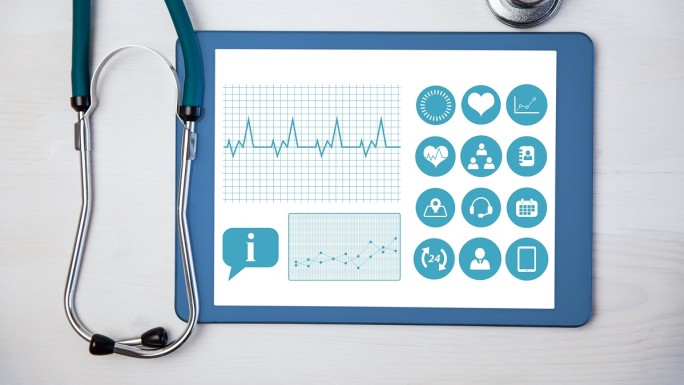Medication History System Overview: Functions And Technology
Medication history research and management used to be time-consuming work. Also, the accuracy level of those medication histories was not steady since they were based much on patients' memories, paper documents, and knowledge of healthcare professionals. However, nowadays, we can store and update all this information on a digital technology called a medication history system.
The complexity of the healthcare process has been eased a lot by the support of this system: the examination and diagnosis process is simpler, more time is spent on communicating with patients, and the burden of document tasks is eliminated for healthcare staff. So, what is so fascinating about this system? Let's figure out which functions, standards, and technology a medication history system should have to enhance a better healthcare setting.
Definition of medication history system
The medication history system is a part of the healthcare management system. The main task of this system is to manage medicine history and patient medication information. It supports doctors, pharmacists, or healthcare providers in following and verifying information about patient medication, including prescriptions and drug interactions. This system can play an essential role in ensuring the safety and effectiveness of disease treatment, saving time for healthcare providers.

The basic workflow of a medication history system
Information collecting: The workflow starts by collecting information on all patients' medical history, including used and current medicine.
Drug interaction checking: Based on the information collected, the system will check to see if there are any interactions between medicines being used.
Medication history recording: The patient's medication history is recorded in the system. This includes determining the medication name, dosage, frequency, and duration of use.
Usage status updating: This information will be updated in the system when a patient receives or stops using a medication.
On-site verifying: In cases where a patient is hospitalized or treated at a medical facility, the pharmacist or medical staff will double-check the medication information and ensure that the correct type and dosage are given to the right patient.
Notification reporting and sending: The system can generate reports and notifications about patient medication, including drug interactions, new drug orders, or dosage adjustments.
Data management: Patients' medication data is managed and stored securely in the system. This may include data backup and patient information security.
Linking to overall medical record: Medication information can also be linked to a patient's medical record, helping to provide a comprehensive view of their health to healthcare professionals.
Patient education: In necessary cases, the system can provide instructions to patients on how to use medications safely and effectively.
Dosage and adherence tracking: The system can monitor proper compliance and ensure that patients are taking their medications as directed.
Suggesting functions for a medication history system
After understanding the workflow of a medication history system, we can consider which functions are suitable and necessary. Here we suggest some of the most important functions an efficient medication history system should be embedded:
Collecting medication history
Medication history systems can collect and store data about patients' medicine using history. This information includes drug names, dosages, use time, prescribers, allergies or adverse reactions, and reason for use.
Checking for drug interactions
This system has the ability to check the interactions between two or more medicines when patients take these medicines together. Checking drug interactions helps ensure patients' safety and effectiveness in treatment.
Recording medication changes
When patients change drugs or dosages, medication history systems can record and store this change.
Drug interaction notice
Medication history systems can send out alerts or notifications when discovering harmful potential interactions in medicines patients are taking.
Linking to medical records
Medication history information is often linked to patients' medical records, providing comprehensive information to healthcare professionals.
Ensuring patient compliance
The system can monitor patient compliance and provide information about the patient's medication use process, checking whether the instructions have been followed correctly or not.
Data management
Patient information and medication history are safely managed and stored in the system. Data management includes adding, editing, deleting, and automatically updating. Management authorities should be decentralized to system users.
Reporting
The system is capable of generating reports related to drug usage and drug interactions to support clinical decisions.
Connecting pharmacies
Medication history systems can link with the pharmacy systems to check and update drug information.

Which standards should be ensured when developing a medication history system?
A system that contains vast amounts of important data, such as a medication history system, needs more than just security to be effective and reliable. Here are some standards a medication history system should be required to achieve better healthcare quality truly.
Integrity
A high-quality medication history system should ensure that the medication data is consistently and accurately recorded, reflecting the true and current state of a patient's medical history. The integrity of the system is crucial for healthcare professionals to make informed decisions about patient care, prescription management, and identification of potential drug interactions.
Regular updates, data validation mechanisms, and adherence to standardized medical coding contribute to the overall integrity of the medication history system.
Readability
Medication history systems should prioritize user-friendly displays and intuitive navigation. This will ensure that healthcare professionals and patients can easily interpret and comprehend the information presented. Clear categorization of medications, concise dosage details, and an organized layout contribute to the readability of the system.
Additionally, the system should provide the option for users to view information in a comprehensible format, allowing for efficient communication and collaboration among healthcare providers and patients.
Sustainability
The sustainability of a medication history system involves its ability to maintain functionality, relevance, and support over an extended period. It should accommodate updates to medical coding systems, integrate with emerging healthcare technologies, and remain compliant with data security regulations.
Regular maintenance, technical support, and adaptation to changing healthcare landscapes contribute to the sustainability of the system, ensuring its continued effectiveness and value in the long term.
Tech stack for medication history system
When it comes to choosing a solution for healthcare systems, it's important to understand what the tech stack or the programming language for systems looks like. Depending on many factors, such as architecture, size, purpose, user, or platform, developers can figure out which tech stack would be appropriate for the system.
If you need more advice and want to have an insightful discussion about a fit solution for your healthcare system, contact us now for a consulting session.
Conclusion
A medication history system is part of a whole bigger healthcare management system; however, its work still can affect every aspect of the healthcare process. By understanding that, healthcare providers can make the right decision about choosing functions, standards and technology for their medication history system.









